Can Non-Economic Incentives Improve the Incentive Effect of Relocating Immigrants? Evidence from Wuwei City, Located at the Northern Foothills of the Qilian Mountains
Abstract
:1. Introduction
2. Material and Methods
2.1. Overview of the Study Area
2.2. Overview of the Relocation Project in Wuwei City
2.3. Data Sources and Sample Analysis
2.4. Methods and Models
2.4.1. Division of Cultural Types of Immigrants
2.4.2. Framework and Indicators
2.4.3. Model and Hypothesis
3. Results
3.1. Difference Analysis of Incentive Factors and Their Influences
3.1.1. Space Differences in Motivating Factors, Negative Behaviors and Incentive Effects
3.1.2. Cultural Types Differences in Motivating Factors, Negative Behaviors and Incentive Effects
3.2. The Influence of Motivation Factors on Negative Behavior and Incentive Effect of Immigrants
3.2.1. The Dispelling Effect of Motivation Factors on Negative Behaviors
3.2.2. The Potential Improvement of Motivation Factors in the Incentive Effect of Immigrants
4. Conclusions and Discussion
Author Contributions
Funding
Institutional Review Board Statement
Informed Consent Statement
Data Availability Statement
Conflicts of Interest
References
- Hu, X.W.; Liu, X.P.; Huang, Y.; Huang, L.; Dong, M. Measurement of spatial deprivation of eco-migrant villages and its impact factors in Ningxia. Acta Geogr. Sci. 2020, 75, 2224–2240. [Google Scholar]
- Chen, S.D.; Kong, F.B. On development and prospects of farmers’ sustainable livelihoods research based on ecological. J. Poyang Lake 2016, 127, 59–71. [Google Scholar]
- Geng, Y.R.; Hong, M.I.; Shuo, A.N.; Kong, Y.X.; Fei, J.I.; Deng, H.L. Research of visualization analysis of ecological immigration in China. J. Southwest Univ. (Nat. Sci. Ed.) 2020, 42, 151–161. [Google Scholar]
- Liu, J. Literature Analysis of Ecological Migration Research Based on CiteSpace. Rural. Econ. Technol. 2021, 32, 21–23. [Google Scholar]
- Zhao, D.P.; Zhao, W.Y.; Sa, X.L.; Cao, L.-Z.; Tian, W.-R. Influencing factors and mechanism of living space integration in an ecological migrant community of Ningxia: Taking Minning town as an example. J. Nat. Resour. 2022, 37, 121–134. [Google Scholar]
- Wang, Y.; Liu, Y.; Zhou, L.H. The livelihood risk and strategic choice of the ecological migrants at the northern foot of Qilian Mountains: A case study of Wuwei city. J. Nat. Resour. 2022, 37, 521–537. [Google Scholar] [CrossRef]
- Li, Y.Y.; Zhao, Z.B.; Li, X.Y.; Zhang, Y.-Q.; Zhang, J.; Li, J.-L. The influence of hometown attachment towards environmental integration of ecological migrants in Qinba Mountainous Area: Based on the case study of three cities in Southern Shaanxi. J. Nat. Resour. 2021, 36, 2541–2556. [Google Scholar] [CrossRef]
- Feng, D.; Zhu, H. Migrant resettlement in rural China: Homemaking and sense of belonging after domicide. J. Rural. Stud. 2021, 93, 301–308. [Google Scholar] [CrossRef]
- Zhao, D.P.; Zhao, W.Y.; Huang, F.P.; Tian, W.; Cao, L. Spatial dynamic evolution characteristics of ecological immigrant community in Minning Town, Ningxia. Sci. Geogr. Sin. 2021, 41, 1812–1821. [Google Scholar]
- Wang, Y.; Zhou, L.H. Performance and Obstacle Tracking to Qilian Mountains’ Ecological Resettlement Project: A Case Study on the Theory of Public Value. Land 2022, 11, 910. [Google Scholar] [CrossRef]
- Guo, C. The Study on Noneconomic Incentive Factor for Village Resettlers of Large and Middle Hydropower Station; Sichuan University: Chengdu, China, 2007. [Google Scholar]
- Jia, X.H.; Ma, H.Y.; Qin, G.Q. How Exogenous Incentives Affect Cooperation Level: An Analysis Based on Analysis of Farmers’ Public Goods Field Experiment. J. Agrotech. Econ. 2020, 9, 79–91. [Google Scholar] [CrossRef]
- Zhang, S.H. The stratum differentiation of network, Crisis and “Window of Opportunity”: The Perspective of Grille/Group Analysis. J. Lover 2018, 10, 23–28. [Google Scholar]
- Hood, C. Reviews of How Institutions Think. J. Public Policy 1987, 7, 93–95. [Google Scholar] [CrossRef]
- Mary, D. Natural Symbols: Explorations in Cosmology; Routledge: London, UK, 1970. [Google Scholar]
- Chen, R.G. Beyond Religious Studies: Mary Douglas’s “Grid-Group” Cultural theory. Sociol. Relig. 2013, 1, 361–380. [Google Scholar]
- Chen, R.G. Communicating Primitive and Modern: A Reanalysis of “Grid-Group” cultural theory. Sociol. Relig. 2015, 3, 194–210. [Google Scholar]
- Bao, L. Grid/Group Analysis: Mary Douglas’ Typology on Cultural Studies. Qinghai J. Ethnol. 2008, 3, 13–17. [Google Scholar]
- Huang, J.B.; Xiong, C. Mary Douglas’s risk research and its theoretical context. Thinking 2019, 45, 13–21. [Google Scholar]
- Yin, X.J.; Zhong, F.L.; Xu, Z.M. Water resource cognitive analysis based on Grid-Group culture theory: A case study of farmers in Gannzhou District in the middle reach of Heihe river. J. Nat. Resour. 2014, 29, 166–176. [Google Scholar]
- Zhong, F.L.; Yin, X.J.; Xu, Z.M. Resident culture values and natural environment perception in Ganzhou district in the middle reaches of Heihe river. J. Glaciol. Geogryology 2012, 34, 972–982. [Google Scholar]
- Zhang, P.; Li, Y. An Efficiency Analysis on the Application of Organizational Inspiration Resources. Mod. Econ. Sci. 2002, 6, 24–29, 92. [Google Scholar]
- Huang, H. On the Behavioral Factors in the Incentive of Channel Members; Wuhan University of Science and Technology: Wuhan, China, 2005. [Google Scholar]
- Shi, D.B. The Study on Management of Core Employees in ZOOMLION Environmental Industry Company; Hunan University: Changsha, China, 2014. [Google Scholar]
- Langford, D.; Fellows, R.F.; Hancock, M.R.; Gale, A.W. Human Resources Management in Construction; Routledge: Oxfordshire, UK, 2014. [Google Scholar]
- Wu, T.H.; Zhai, G.F. Retrospect and prospect of research on disaster prevention and reduction based on the perspective of incentive theory. J. Catastrophology 2019, 34, 203–209, 234. [Google Scholar]
- Greech, R. Employee Motivation. Manag. Q. 1995, 36, 33–40. [Google Scholar]
- Wang, K.; Wang, D.L. The incentive review and empirical idea about high and new technology enterprise R&D staff. Hum. Resour. Dev. 2010, 1, 47–50. [Google Scholar]
- Yin, M. Discussion on the connotation and scope of immaterial incentive: The integration of material and immaterial incentives. Labor Secur. World 2016, 20, 57–59. [Google Scholar]
- Daniel Corsten & Nirmalya Kumar. Do Suppliers Benefit from Collaborative Relationships with Large Retailers? An Empirical Investigation of Efficient Consumer Response Adoption. J. Mark. 2005, 7, 80–94. [Google Scholar]
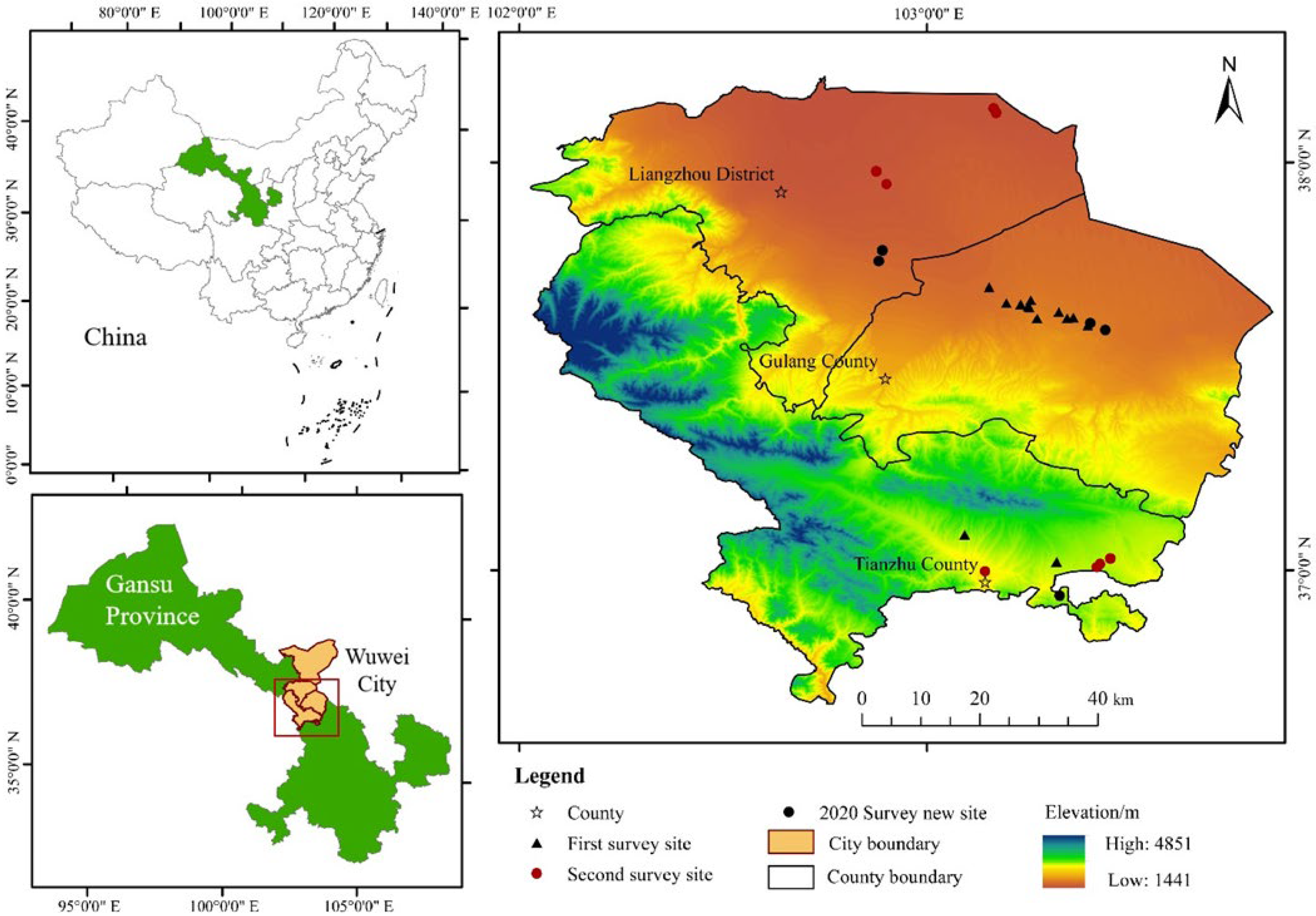
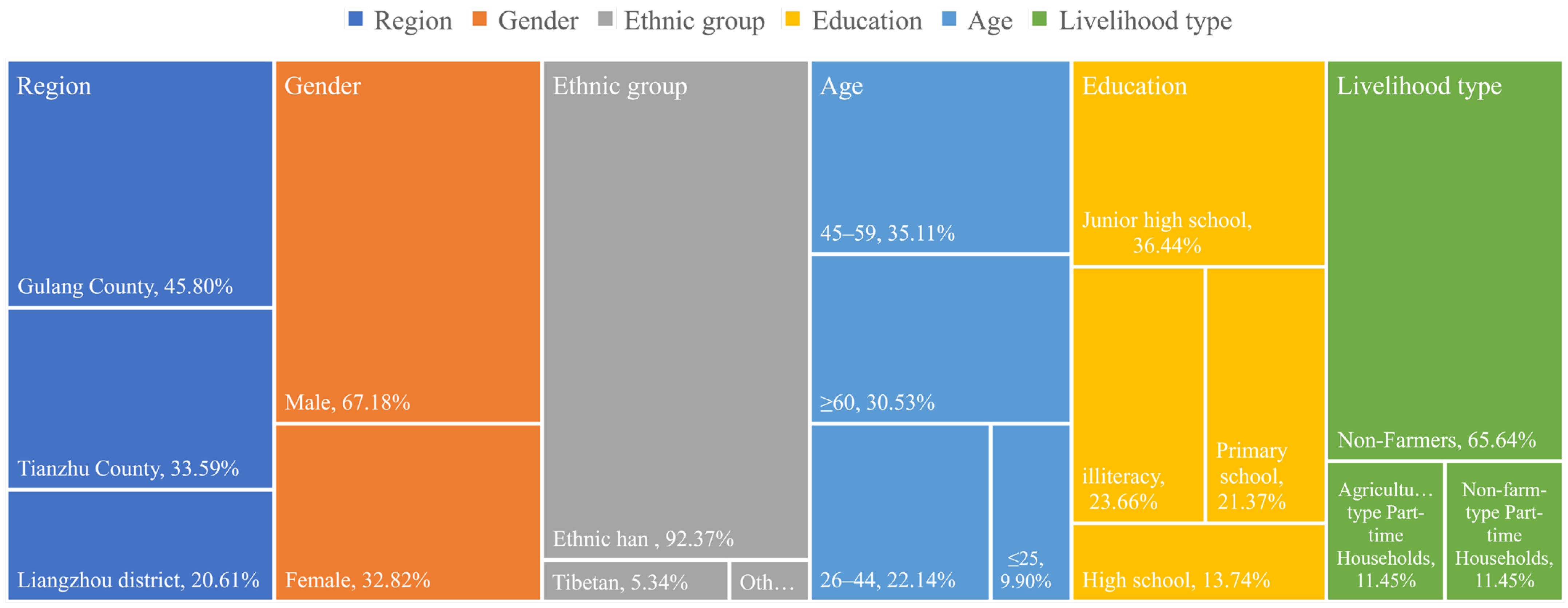
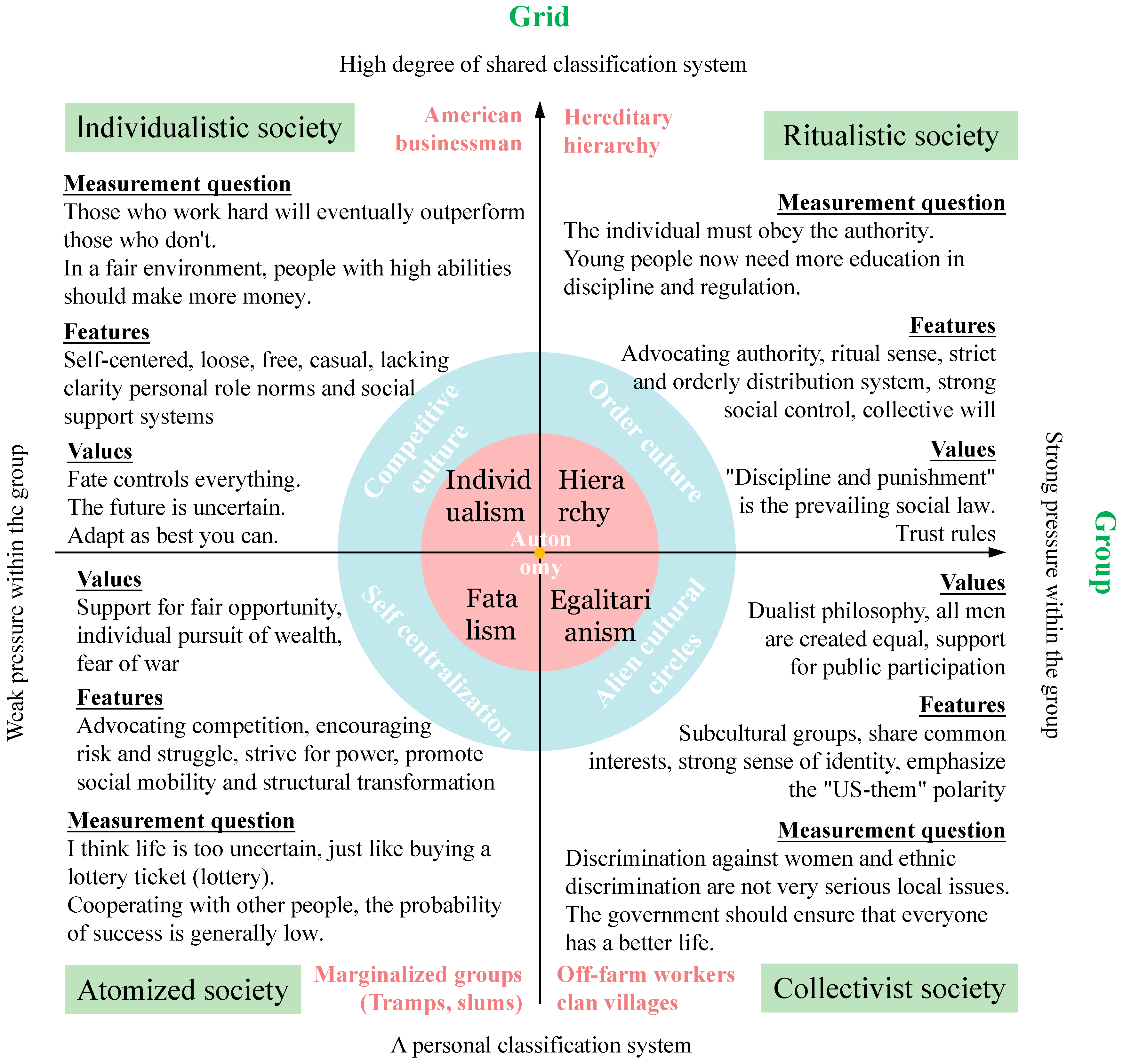

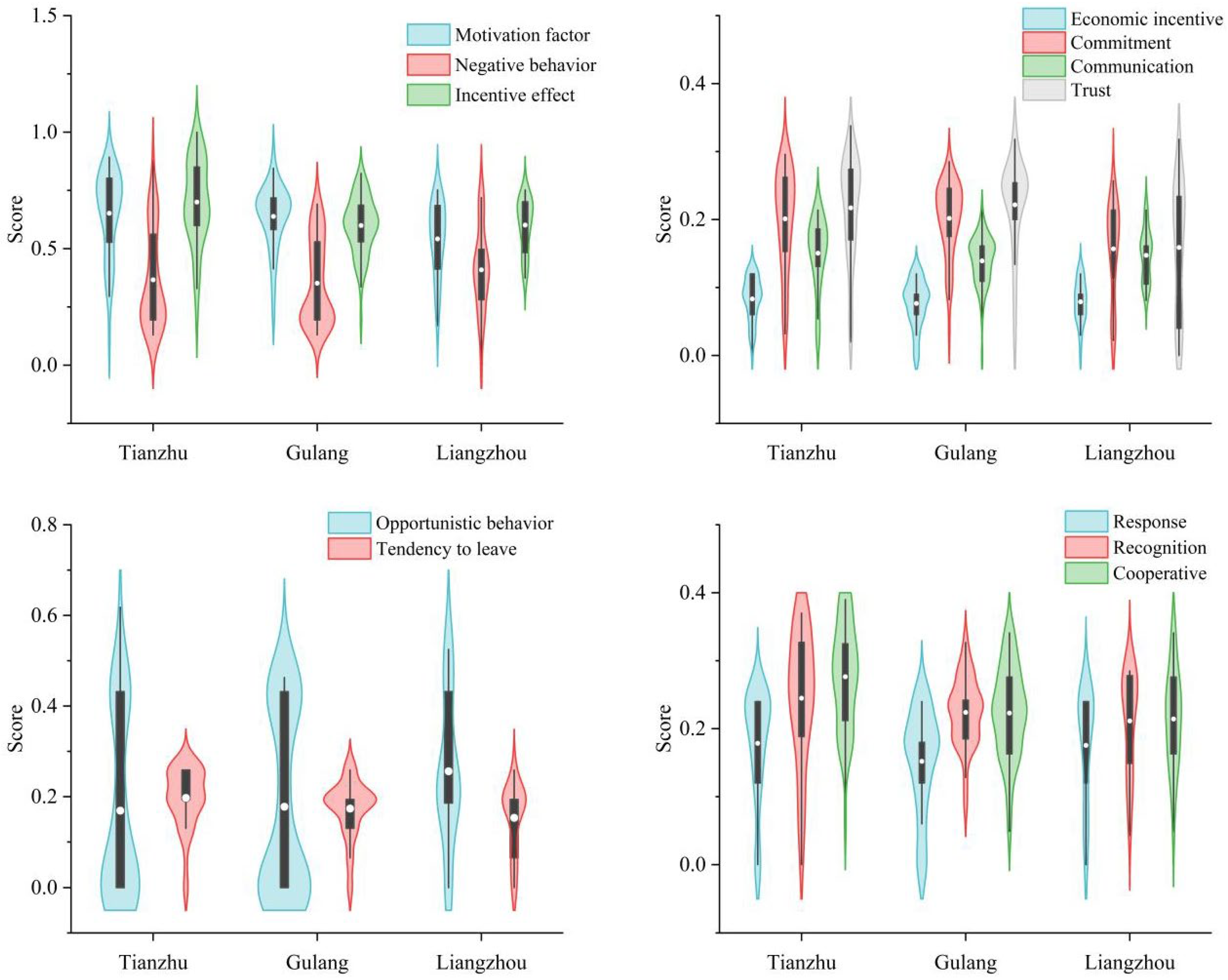
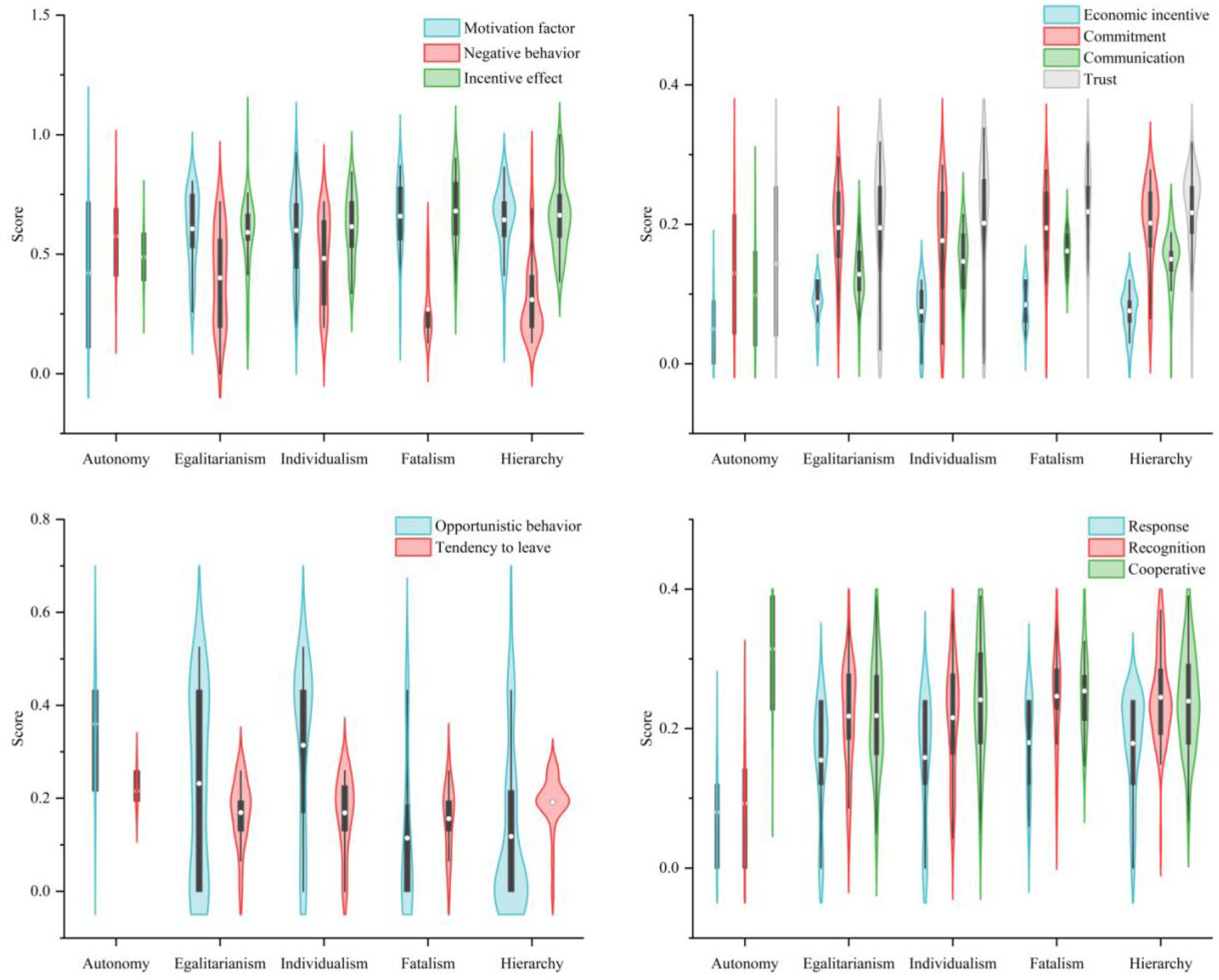
| Target | Dimension | Indicator | Measurement Question | Mean | Weight | |||
|---|---|---|---|---|---|---|---|---|
| Entropy | CRITIC | CV | Final | |||||
| Government motivation factor | Economic incentive | Economic incentive | The compensation and support conditions offered by the local government are very attractive to us. | 3.641 | 0.108 | 0.136 | 0.115 | 0.120 |
| Commitment incentive | Participation motivation | The local government places a high value on our cooperative relationship and listens to our suggestions and feedback. | 3.366 | 0.125 | 0.098 | 0.115 | 0.113 | |
| Respect incentives | The local government will make some adjustments to meet our requirements. | 3.366 | 0.078 | 0.084 | 0.096 | 0.086 | ||
| Vision incentive | The local government has done a lot of work for the long-term development of the migrant. | 3.305 | 0.141 | 0.12 | 0.127 | 0.129 | ||
| Trust motivation | Trust motivation | The local government will see things from the immigrant’s point of view | 3.420 | 0.162 | 0.108 | 0.131 | 0.133 | |
| Development Incentive | The local government is able to give reasonable and effective suggestions for relocation, which are carefully considered. | 3.542 | 0.067 | 0.082 | 0.090 | 0.080 | ||
| Spiritual motivation | The local government is concerned about our safety, particularly in matters closely related to our interests as immigrants. | 3.420 | 0.152 | 0.099 | 0.124 | 0.125 | ||
| Communication incentive | Promotional incentives | The local government will inform us of the country’s various immigration policies and regulations. | 3.885 | 0.072 | 0.141 | 0.095 | 0.103 | |
| Communication motivation | The local government often discusses relocation with us. | 3.527 | 0.094 | 0.132 | 0.107 | 0.111 | ||
| Negative behavior of immigrants | Opportunistic behavior | Profit behavior | It is not uncommon for us to lie to protect or maximize profit when it comes to housing, land allocation and compensation. | 1.878 | 0.480 | 0.254 | 0.378 | 0.370 |
| Default behavior | Our best interests sometimes lead us to violate formal agreements with local governments. | 1.893 | 0.451 | 0.257 | 0.405 | 0.371 | ||
| Leave trend | Moving tendency | In the near future, I plan to move to other places or move back to my hometown. | 3.740 | 0.069 | 0.489 | 0.218 | 0.259 | |
| The incentive effect of immigration | Response | Migration willingness | Our family is more than willing to relocate to the new village. | 3.763 | 0.256 | 0.228 | 0.236 | 0.240 |
| Approve | Paradise recognition | In our minds, the new village represents a beautiful paradise. | 3.725 | 0.195 | 0.193 | 0.209 | 0.199 | |
| Immigration recognition | We will praise the work of the local government to others (e.g., the media, friends and family). | 3.168 | 0.188 | 0.191 | 0.204 | 0.194 | ||
| Cooperation | Overall consciousness | To meet the government’s requirements, we will make some compromises and concessions. | 3.878 | 0.191 | 0.178 | 0.143 | 0.171 | |
| Advice feedback | In a timely manner, we will provide feedback and suggestions to the local government. | 3.405 | 0.170 | 0.210 | 0.208 | 0.196 | ||
| Independent Variables | 1 Negative Behavior | 2 Negative Behavior | 3 Negative Behavior | 4 Negative Behavior | 5 Negative Behavior | 6 Negative Behavior | 7 Opportunistic Behavior | 8 Leave Trend | ||||||||
|---|---|---|---|---|---|---|---|---|---|---|---|---|---|---|---|---|
| Beta | t-Test | Beta | t-Test | Beta | t-Test | Beta | t-Test | Beta | t-Test | Beta | t-Test | Beta | t-Test | Beta | t-Test | |
| Constant | 0.237 *** | 3.105 | 0.321 *** | 3.547 | 0.197 * | 1.69 | 0.332 *** | 3.327 | 0.297 ** | 2.462 | 0.237 * | 1.937 | 0.034 | 0.268 | 0.204 | 4.205 |
| Economic incentive | 0.010 | 0.702 | 0.030 ** | 2.027 | 0.032 ** | 2.153 | 0.030 * | 1.874 | 0.032 ** | 2.021 | 0.024 | 1.468 | 0.008 | 1.282 | ||
| Participation motivation | −0.069 *** | −3.424 | −0.067 *** | −3.331 | −0.069 *** | −3.243 | −0.06 *** | −2.802 | −0.067 *** | −3.141 | −0.056 ** | −2.51 | −0.012 | −1.401 | ||
| Respect incentives | −0.008 | −0.332 | −0.015 | −0.638 | 0 | 0.004 | −0.008 | −0.29 | −0.007 | −0.273 | −0.015 | −0.55 | 0.008 | 0.753 | ||
| Vision incentive | 0.021 | 1.318 | 0.019 | 1.155 | 0.025 | 1.515 | 0.024 | 1.45 | 0.022 | 1.313 | 0.029 * | 1.705 | −0.007 | −1.131 | ||
| Trust motivation | −0.031 | −1.379 | −0.03 | −1.273 | −0.017 | −1.042 | −0.02 | −0.834 | −0.004 | −0.463 | ||||||
| Development Incentive | −0.016 | −0.630 | −0.005 | −0.207 | 0.028 | −0.664 | −0.014 | −0.54 | −0.003 | −0.273 | ||||||
| Spiritual motivation | 0.033 | 1.481 | 0.037 | 1.597 | 0.022 | 1.206 | 0.034 | 1.449 | −0.007 | −0.730 | ||||||
| Promotional incentives | 0.025 | 1.452 | 0.018 | 1.031 | 0.004 | 1.249 | 0.025 | 1.372 | −0.003 | −0.422 | ||||||
| Communication incentive | 0.007 | 0.428 | 0.003 | 0.151 | 0.019 | 0.210 | −0.005 | −0.275 | 0.009 | 1.253 | ||||||
| Gulang County | −0.045 | −1.158 | −0.010 | −0.250 | 0.004 | 0.100 | −0.019 | −0.488 | −0.016 | −0.403 | −0.007 | −0.177 | 0.012 | 0.288 | −0.019 | −1.198 |
| Liangzhou District | 0.028 | 0.641 | 0.012 | 0.286 | 0.013 | 0.310 | 0.011 | 0.247 | 0.023 | 0.503 | 0.010 | 0.230 | 0.068 | 1.462 | −0.057 *** | −3.234 |
| Junior high school | 0.016 | 0.460 | 0.042 | 1.216 | 0.045 | 1.286 | 0.047 | 1.359 | 0.039 | 1.121 | 0.050 | 1.419 | 0.032 | 0.897 | 0.017 | 1.249 |
| High school | −0.038 | −0.779 | −0.042 | −0.915 | −0.035 | −0.752 | −0.039 | −0.835 | −0.028 | −0.593 | −0.034 | −0.734 | −0.049 | −1.014 | 0.015 | 0.789 |
| Undergraduate | −0.027 | −0.314 | −0.029 | −0.344 | −0.036 | −0.428 | −0.041 | −0.492 | −0.043 | −0.507 | −0.046 | −0.545 | −0.082 | −0.950 | 0.036 | 1.094 |
| Individualism | 0.235 *** | 4.272 | 0.215 *** | 4.065 | 0.219 *** | 4.153 | 0.232 *** | 4.331 | 0.231 *** | 4.254 | 0.232 *** | 4.339 | 0.22 *** | 3.981 | 0.012 | 0.590 |
| Egalitarianism | 0.133 ** | 2.485 | 0.144 *** | 2.829 | 0.166 *** | 3.149 | 0.139 *** | 2.700 | 0.162 *** | 2.990 | 0.156 *** | 2.922 | 0.146 *** | 2.647 | 0.010 | 0.487 |
| Hierarchy | 0.051 | 1.037 | 0.082 * | 1.734 | 0.095 ** | 1.975 | 0.082 * | 1.731 | 0.082 * | 1.687 | 0.093 * | 1.921 | 0.055 | 1.100 | 0.038 ** | 1.989 |
| Autonomy | 0.309 *** | 2.620 | 0.342 *** | 2.994 | 0.389 *** | 3.323 | 0.338 *** | 2.954 | 0.340 *** | 2.863 | 0.378 *** | 3.184 | 0.340 *** | 2.781 | 0.037 | 0.798 |
| Tibetan | 0.006 | 0.074 | 0.021 | 0.291 | 0.029 | 0.410 | 0.024 | 0.331 | 0.032 | 0.442 | 0.032 | 0.440 | 0.022 | 0.292 | 0.010 | 0.352 |
| Adjusted R2 | 0.149 | 0.235 | 0.241 | 0.238 | 0.216 | 0.237 | 0.222 | 0.063 | ||||||||
| Durbin−Watson | 1.537 | 1.630 | 1.629 | 1.726 | 1.758 | 1.711 | 1.555 | 1.955 | ||||||||
| Independent Variables | 1 Incentive Effect | 2 Incentive Effect | 3 Incentive Effect | 4 Incentive Effect | 5 Incentive Effect | 6 Incentive Effect | 7 Behavioral Response | 8 Effect of Recognition | 9 Cooperation Intention | |||||||||
|---|---|---|---|---|---|---|---|---|---|---|---|---|---|---|---|---|---|---|
| Beta | t-Test | Beta | t-Test | Beta | t-Test | Beta | t-Test | Beta | t-Test | Beta | t-Test | Beta | t-Test | Beta | t-Test | Beta | t-Test | |
| Constant | 0.512 | 8.942 | 0.381 *** | 5.488 | 0.398 *** | 4.562 | 0.414 *** | 4.668 | 0.317 *** | 3.517 | 0.267 *** | 2.926 | 0.016 | 0.338 | 0.068 | 1.475 | 0.182 *** | 3.573 |
| Economic incentive | 0.046 *** | 4.213 | 0.036 *** | 0.002 | 0.048 *** | 4.371 | 0.027 ** | 2.298 | 0.024 *** | 3.723 | 0.008 | 1.265 | −0.004 | −0.606 | ||||
| Participation motivation | 0 | −0.021 | 0.016 | 0.996 | −0.008 | −0.486 | −0.014 | −0.877 | −0.001 | −0.159 | −0.005 | −0.575 | −0.008 | −0.885 | ||||
| Respect incentives | 0.025 | 1.371 | 0.022 | 1.165 | 0.006 | 0.297 | 0.006 | 0.327 | −0.003 | −0.283 | −0.016 | −1.592 | 0.025 ** | 2.321 | ||||
| Vision incentive | 0.025 ** | 2.081 | 0.027 ** | 2.104 | 0.019 | 1.539 | 0.017 | 1.390 | −0.003 | −0.490 | 0.014 ** | 2.294 | 0.006 | 0.857 | ||||
| Trust motivation | 0.001 | 0.074 | 0.006 | 0.348 | 0.008 | 0.804 | 0.015 * | 1.710 | −0.017 * | −1.707 | ||||||||
| Development Incentive | 0.045 ** | 2.400 | 0.035 * | 1.858 | 0.006 | 0.620 | 0.013 | 1.349 | 0.016 | 1.506 | ||||||||
| Spiritual motivation | 0.029 * | 1.668 | 0.021 | 1.232 | 0.020 ** | 2.230 | 0.006 | 0.722 | −0.006 | −0.592 | ||||||||
| Promotional incentives | 0.027 ** | 2.010 | 0.014 | 0.990 | 0.018 | 1.357 | 0.021 | 1.613 | 0.005 | 0.770 | 0.006 | 0.855 | 0.010 | 1.366 | ||||
| Communication incentive | −0.003 | −0.259 | −0.001 | −0.041 | −0.011 | −0.836 | −0.010 | −0.786 | −0.013 * | −1.844 | 0.002 | 0.275 | 0.001 | 0.111 | ||||
| Gulang County | −0.090 *** | −3.122 | −0.086 *** | −2.951 | −0.078 *** | −2.662 | −0.090 *** | −2.908 | −0.085 *** | −2.852 | −0.077 *** | −2.627 | −0.032 ** | −2.04 | −0.009 | −0.584 | −0.037 ** | −2.221 |
| Liangzhou District | −0.087 *** | −2.611 | −0.063 * | −1.877 | −0.084 ** | −2.554 | −0.056 | −1.612 | −0.029 | −0.850 | −0.039 | −1.171 | 0.016 | 0.918 | −0.002 | −0.122 | −0.053 *** | −2.858 |
| Junior high school | 0.047 * | 1.791 | 0.024 | 0.923 | 0.049 * | 1.875 | 0.016 | 0.573 | 0.014 | 0.526 | 0.023 | 0.865 | 0.006 | 0.440 | 0.011 | 0.861 | 0.005 | 0.331 |
| High school | 0.062 * | 1.681 | 0.060 * | 1.683 | 0.066 * | 1.806 | 0.070 * | 1.891 | 0.066 * | 1.852 | 0.060 * | 1.730 | 0.006 | 0.333 | 0.011 | 0.648 | 0.042 ** | 2.185 |
| Undergraduate | 0.016 | 0.246 | −0.006 | −0.100 | 0.001 | 0.023 | −0.008 | −0.123 | −0.010 | −0.159 | −0.012 | −0.197 | 0.001 | 0.036 | 0.020 | 0.625 | −0.033 | −0.941 |
| Individualism | −0.013 | −0.308 | −0.002 | −0.053 | −0.008 | −0.198 | −0.005 | −0.107 | −0.002 | −0.055 | −0.001 | −0.025 | 0.011 | 0.500 | −0.018 | −0.897 | 0.007 | 0.296 |
| Egalitarianism | −0.073 * | −1.814 | −0.067 * | −1.701 | −0.057 | −1.384 | −0.052 | −1.241 | −0.035 | −0.875 | −0.040 | −1.009 | −0.014 | −0.677 | −0.002 | −0.088 | −0.024 | −1.077 |
| Hierarchy | 0.022 | 0.590 | 0.015 | 0.417 | 0.033 | 0.892 | 0.008 | 0.198 | 0.022 | 0.597 | 0.031 | 0.856 | 0.019 | 0.995 | 0.021 | 1.150 | −0.009 | −0.474 |
| Autonomy | −0.134 | −1.513 | −0.113 | −1.297 | −0.094 | −1.041 | −0.133 | −1.425 | −0.117 | −1.323 | −0.086 | −0.971 | −0.053 | −1.132 | −0.089 ** | −1.977 | 0.055 | 1.124 |
| Tibetan | 0.029 | 0.517 | 0.039 | 0.724 | 0.041 | 0.736 | 0.054 | 0.939 | 0.029 | 0.537 | 0.029 | 0.537 | −0.019 | −0.672 | 0.013 | 0.492 | 0.034 | 1.147 |
| Adjusted R2 | 0.246 | 0.291 | 0.259 | 0.229 | 0.309 | 0.335 | 0.293 | 0.283 | 0.171 | |||||||||
| Durbin-Watson | 2.027 | 1.969 | 1.975 | 1.990 | 2.078 | 2.025 | 2.173 | 1.645 | 2.100 | |||||||||
Publisher’s Note: MDPI stays neutral with regard to jurisdictional claims in published maps and institutional affiliations. |
© 2022 by the authors. Licensee MDPI, Basel, Switzerland. This article is an open access article distributed under the terms and conditions of the Creative Commons Attribution (CC BY) license (https://creativecommons.org/licenses/by/4.0/).
Share and Cite
Wang, Y.; Zhou, L. Can Non-Economic Incentives Improve the Incentive Effect of Relocating Immigrants? Evidence from Wuwei City, Located at the Northern Foothills of the Qilian Mountains. Int. J. Environ. Res. Public Health 2022, 19, 13039. https://doi.org/10.3390/ijerph192013039
Wang Y, Zhou L. Can Non-Economic Incentives Improve the Incentive Effect of Relocating Immigrants? Evidence from Wuwei City, Located at the Northern Foothills of the Qilian Mountains. International Journal of Environmental Research and Public Health. 2022; 19(20):13039. https://doi.org/10.3390/ijerph192013039
Chicago/Turabian StyleWang, Ya, and Lihua Zhou. 2022. "Can Non-Economic Incentives Improve the Incentive Effect of Relocating Immigrants? Evidence from Wuwei City, Located at the Northern Foothills of the Qilian Mountains" International Journal of Environmental Research and Public Health 19, no. 20: 13039. https://doi.org/10.3390/ijerph192013039
APA StyleWang, Y., & Zhou, L. (2022). Can Non-Economic Incentives Improve the Incentive Effect of Relocating Immigrants? Evidence from Wuwei City, Located at the Northern Foothills of the Qilian Mountains. International Journal of Environmental Research and Public Health, 19(20), 13039. https://doi.org/10.3390/ijerph192013039







